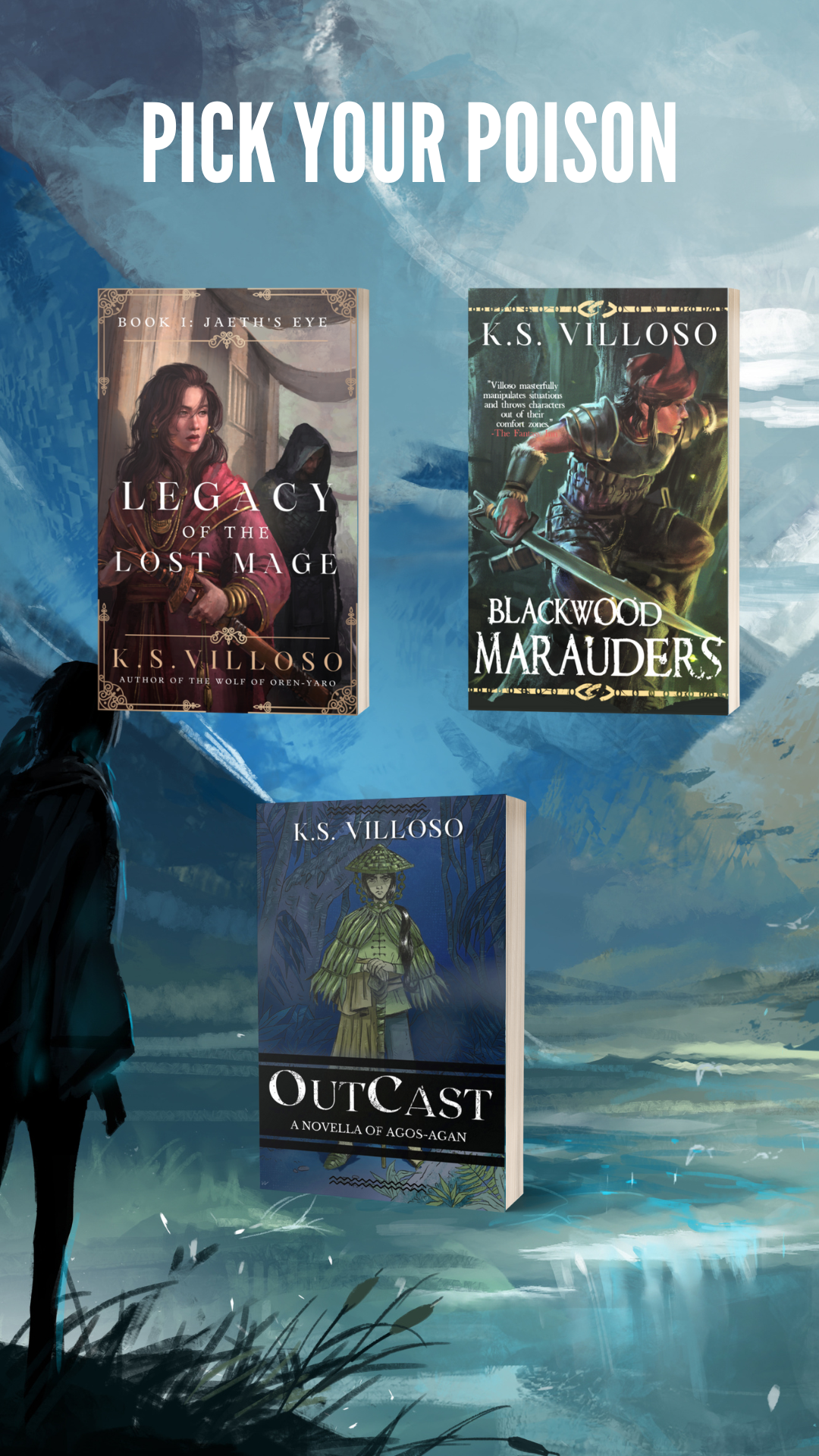I wrote about this a while back, where I talked about Jaeth’s Eye, Book 1 of The Agartes Epilogues, as being a “short” fantasy novel at approximately 118k words.
Aina’s Breath, Book 2, finished at 128,600 words. I expect I’ll end up cutting a few hundred more words before the final edits.
Sapphire’s Flight, the third book, is going to be the longest. My estimate is that it will finish at 190,000 words, give or take a few. Right now it’s at 145,500 words.
Even with Sapphire’s Flight being the longest novel I’ve written, I feel like my novels are unbelievably short in comparison to the typical epic fantasy. And it’s not like they’re doing anything too different: there’s a large cast of characters, and battles and travelling and political banter, just like any other. If anything, it’s my love letter to the genre. Why are my word counts so short?
I’ve talked about not liking doing too much description before. I’m very sensitive to flow, and anything that bogs down the flow, I cut out. So as I’ve mentioned before, if you’re expecting twenty pages of explanation about the magical system, don’t read my stuff.
The thing is, I love tight storylines. While I love epic fantasy, I’m going to be honest and admit that I skip through anywhere from 25-75% of the text, depending on how bad the writer is at getting to the point. I figure that if I like the story enough, I can always go back and re-read things again at a slower pace. “Tight storyline” and “epic fantasy” don’t seem to mix, which is a shame, because I think it can be done. Case in point: my favourite fantasy series, The Sarantine Mosaic by Guy Gavriel Kay. Large cast of characters, very large story, lots of depth, and only about 400k words for both books combined (which seems big but still only barely less than a couple of books from the ASoIaF series). The Sarantine Mosaic wins for probably being the only fantasy series I’ve read word for word, over and over again. I read it at least once every couple of years.
This is what I’ve tried with my novels. While Jaeth’s Eye is mostly a set up for the next two novels, there’s enough plot happening in it that I think a fair number of its readers actually think the story is finished with that one book alone. It’s not, obviously. But all three books have mini-plots that build up on each other. My 2nd editor for Aina’s Breath described it as a “fast read”…even though it doesn’t actually pick up the pace until the second half. I think, despite its length, that Sapphire’s Flight could be even faster.
In The Agartes Epilogues, everything is taken matter-of-factly. I spend less time explaining and more time dragging the reader in with the characters through the muck. I also sort of like to think that readers are smart enough to figure out a few things without having to spend half a page talking about them if they have nothing to do with the story. This has backfired, of course, because I expect readers to pay attention; they don’t always. The worldbuilding is there, I just don’t talk about it as much if there is no reason for it. There’s a lot of stuff happening in the background that is only hinted at.
There is also a lot of character development, which is closely tied into the plot. I’m a firm believer in multi-tasking.
I think a lot of epic doorstoppers don’t justify their lengths.
That’s just my opinion–I know a lot of people enjoy the worldbuilding. But again, I think it’s possible to worldbuild without having to describe every single door handle and street sign in the city. The Sarantine Mosaic, to go back to my previous example, was able to convey a very rich and living world, including at least three different societies. Superstition, religion, beliefs, habits, approaches towards craft, in two books. If you’ve never read it, you have to. It’s beautiful, especially if you’re a fellow artist. The Goddamned thing is like my Bible.
Read the The Agartes Epilogues. It won’t take too much of your time.


